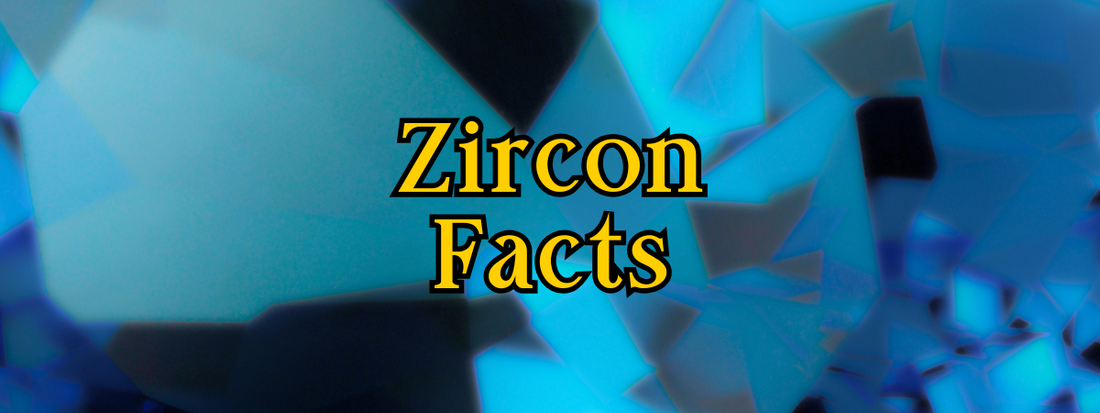
10 Interesting Facts About Zircon
Zircon is a gemstone that carries a remarkable story stretching back billions of years.
While it may not have the same fame as diamonds or sapphires, zircon holds a unique place in Earth’s history and in the world of gemology. From ancient origins to Victorian-era sparkle, here are ten fascinating facts about this often overlooked gem.
 Zircon Is One of the Oldest Minerals on Earth
Zircon Is One of the Oldest Minerals on Earth
The oldest known zircon crystals have been dated to over 4.4 billion years old, making them some of the earliest solid materials formed on our planet. These tiny time capsules were discovered in the Jack Hills region of Western Australia and offer a glimpse into Earth’s infancy.
 Zircons Help Us Understand Earth’s Earliest Crust
Zircons Help Us Understand Earth’s Earliest Crust
Because zircon crystals can survive intense geological processes and retain information about their journey, scientists use them to date Earth’s earliest crust. Zircon is a vital tool in piecing together the planet’s formative years and understanding how continents first formed.
 Microscopic Inclusions in Zircons Reveal Ancient Clues
Microscopic Inclusions in Zircons Reveal Ancient Clues
Some zircons from Jack Hills contain tiny inclusions, trapped pockets of minerals or fluids, that suggest liquid water existed on Earth more than 4 billion years ago. This discovery has huge implications for the origin of life and Earth’s early environment.
 Zircon Has Been Used as a Gemstone for Over 2,000 Years
Zircon Has Been Used as a Gemstone for Over 2,000 Years
Historical texts from ancient Hindu culture mention zircon, and it was known in medieval Europe as well. This makes zircon one of the oldest known gemstones to be prized for its beauty and mystical qualities.
 During the Victorian Era, Zircon Was a Popular Diamond Alternative
During the Victorian Era, Zircon Was a Popular Diamond Alternative
Especially prized was colourless zircon, which was often marketed as “Matura Diamond,” due to the region of Sri Lankan where it was sourced. It was an affordable, sparkling substitute for diamonds in Victorian jewellery.
 Sri Lanka Is the Most Famous Source of Gem-Quality Zircon
Sri Lanka Is the Most Famous Source of Gem-Quality Zircon
Known for a dazzling range of colours, from colourless to yellow, brown, and green, Sri Lanka’s zircons have long been prized by jewellers and collectors worldwide.
 Australia Is the Largest Producer of Zircon for Industrial Use
Australia Is the Largest Producer of Zircon for Industrial Use
While much of Australia’s zircon is too opaque or dull for gemstones, the country leads the world in zircon production by volume, supplying material used in ceramics, refractory products, and more.
 Zircon’s Fire Is Nearly as Brilliant as Diamond’s
Zircon’s Fire Is Nearly as Brilliant as Diamond’s
Zircon’s dispersion, a measure of how much it splits light into spectral colours, is 0.038, which is only slightly below diamond’s 0.044. This means that when well-cut, zircon can flash with remarkable sparkle.
 Zircon’s Popularity Is Hindered by A Name Confusion
Zircon’s Popularity Is Hindered by A Name Confusion
Unfortunately, many consumers confuse zircon with cubic zirconia, a synthetic diamond simulant. This misunderstanding has led to zircon being underappreciated despite its natural beauty and fascinating history.
 Zircon Can Be Radioactive Making It Useful for Dating
Zircon Can Be Radioactive Making It Useful for Dating
Zircons often contain trace uranium and thorium, which cause gradual crystal damage over time, a process called metamictization. This radioactivity is not usually harmful but makes zircon invaluable for radiometric dating. It helps scientists discover and understand the history and age of the Earth’s rocks and geological events over millions or billions of years.

From some of the oldest materials on Earth to Victorian parlour sparkle, zircon is a gemstone rich with history and science. Whether you’re a geology enthusiast, gem lover, or jeweller, zircon offers a both a fascinating window into our planet’s deep past and a timeless beautiful sparkle.
